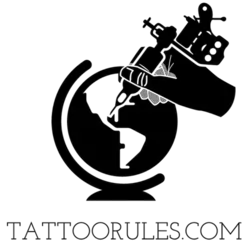Are you on the path to becoming a radiologist, ready to dive into the captivating world of medical imaging, but also wondering daily – can radiologists have tattoos?
You’re not alone in your curiosity. Aspiring radiologists, like you, often grapple with questions about self-expression and the expectations of their chosen field.
The journey to becoming a radiologist is a demanding one, filled with rigorous training, long hours of study, and a deep commitment to patient care. But what about your personal choices, like tattoos? Can they be a part of your future as a radiologist?
We’ll explore the factors that may influence your decision regarding tattoos in the radiology profession, address potential concerns, and offer guidance on how to navigate this exciting yet challenging career path while staying true to your individuality.
Is There a Radiologist’s Tattoo Policy?
When it comes to tattoos and radiologists, there isn’t a one-size-fits-all policy etched in stone.
Unlike some professions with strict dress codes and appearance guidelines, radiology offers a bit more flexibility in terms of personal expression. The reason for this flexibility lies in the diverse nature of workplaces within the field and the absence of a universally enforced tattoo policy.
In the realm of radiology or any other medical sector (i.e. doctors, EMTs, nurses, or surgeons), your tattoo destiny can be influenced by various factors:
Workplace Variation
Radiologists can find themselves working in a variety of settings, from hospitals and clinics to private practices and research institutions.
Each of these workplaces may have its own stance on visible tattoos. While some hospitals might have stricter dress code policies, smaller practices or research facilities might be more lenient.
Independence
Radiologists often have the opportunity to work independently or in a self-employed capacity.
If you’re the boss of your radiology practice, you have more control over your appearance choices, including your tattoos. Many independent radiologists choose to express their individuality through their ink, with no one to object.
Patient Interaction
Another factor to consider is the extent of patient interaction in your role. Radiologists who primarily work behind the scenes, interpreting images and collaborating with medical teams, may have more freedom in terms of their appearance compared to those who have frequent face-to-face patient encounters.
Local Culture and Norms
Tattoo acceptance can also vary by region and culture. In some areas, tattoos might be widely accepted, while in others, they could still carry a stigma.
Understanding the local norms and expectations can help you make informed decisions about your tattoos.
Given this variation, if you’re an aspiring radiologist with a love for tattoos, it’s essential to do your homework. Research the policies and norms at potential workplaces, consider the nature of your work, and think about your own comfort level with your tattoos being on display.
Remember, there’s no blanket rule against tattoos in radiology. Your choice to have tattoos and how you display them is ultimately a personal decision, guided by the specific circumstances of your career and your own desire for self-expression.
So, whether you choose to proudly flaunt your ink or keep it under wraps, the world of radiology has a place for you to shine.
Tattoos to Avoid as a Radiologist
While radiology offers more freedom in personal appearance compared to some professions, there are still considerations when it comes to tattoos, particularly if you’re aiming to maximize your chances of getting hired and building trust with patients.
Here are some guidelines on tattoos to avoid as a radiologist:
1. Facial Tattoos
Tattoos on your face, including the neck and head, can be a potential point of concern for employers and patients alike.
They are often more visible and could distract from the professional image expected in medical settings. To enhance your employability and patient interactions, it’s wise to steer clear of facial tattoos.
2. Offensive or Controversial Content
Tattoos with offensive, controversial, or politically charged content should be approached with caution.
Remember that the medical field is dedicated to providing care and comfort to all patients, regardless of their background or beliefs. Tattoos that may be deemed offensive could hinder effective patient communication and trust-building.
3. Excessive or Inappropriate Tattoos
While self-expression is important, it’s essential to strike a balance. Excessive or overly provocative tattoos might not align with the conservative nature of healthcare environments. Opt for tattoos that are tasteful and don’t draw excessive attention.
4. Tattoos in Highly Visible Areas
Tattoos on hands, forearms, or any other highly visible areas should be considered carefully. These areas are often exposed, and while they might not necessarily disqualify you from a radiology career, they can be a point of contention, depending on the workplace culture.
It’s important to note that these guidelines are not meant to stifle your individuality but rather to help you make informed choices that align with the professional expectations in the field of radiology. Your tattoos should not detract from your expertise or your ability to establish trust with patients.
Before getting inked, especially in visible areas, consider the potential impact on your career and patient relationships.
Ultimately, the choice is yours, but by being mindful of these considerations, you can navigate your radiology career while proudly sporting your tattoos in a way that respects both your individuality and the expectations of your profession.


